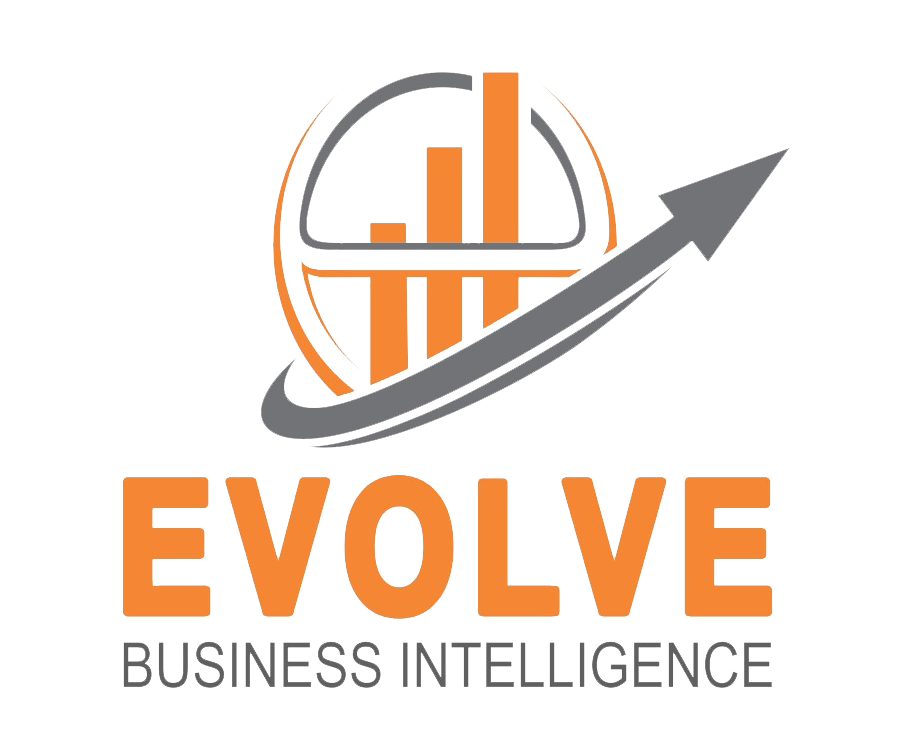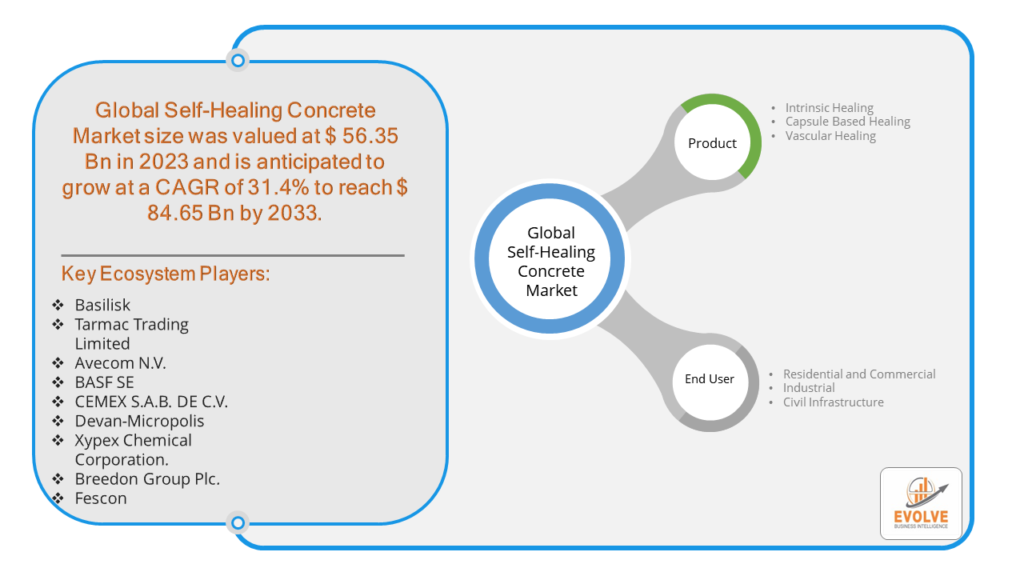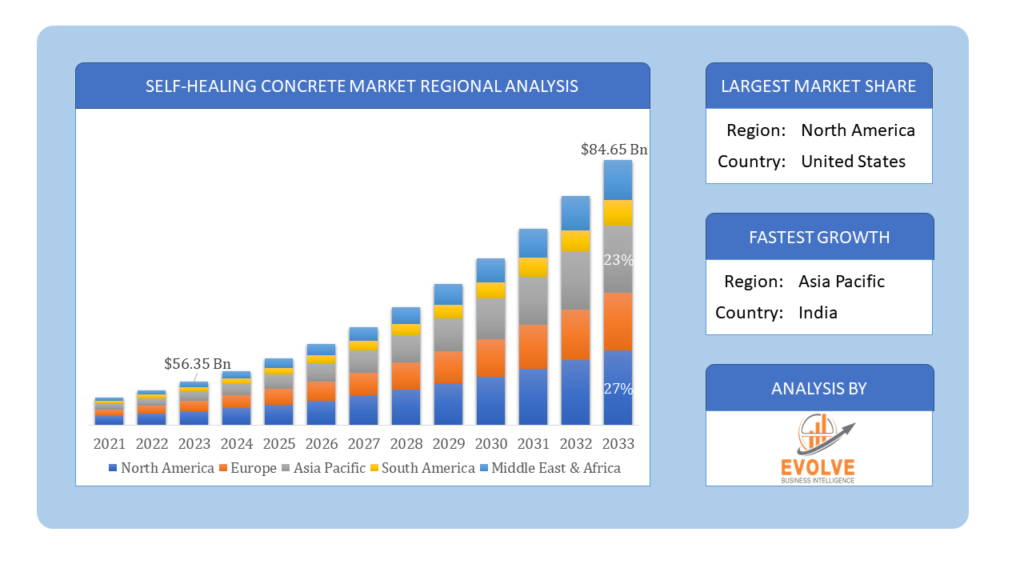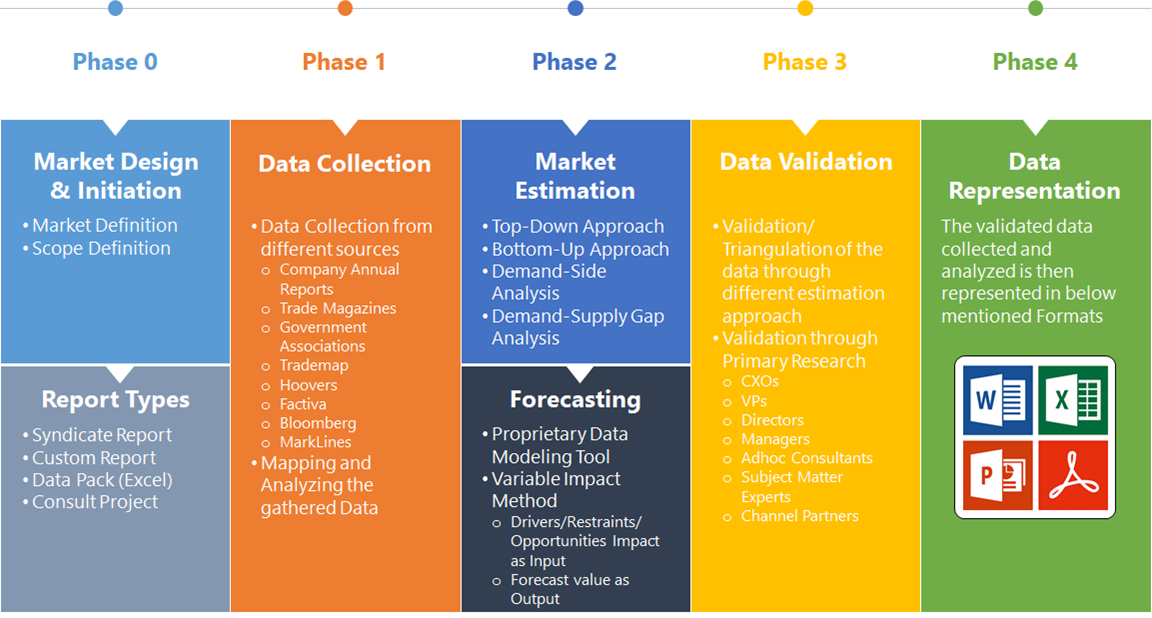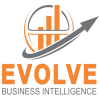Self-Healing Concrete Market Overview
The Self-Healing Concrete Market Size is expected to reach USD 84.65 Billion by 2033. The Self-Healing Concrete Market industry size accounted for USD 56.35 Billion in 2023 and is expected to expand at a compound annual growth rate (CAGR) of 31.4% from 2023 to 2033. The Self-Healing Concrete Market refers to the industry involved in the production, distribution, and application of concrete that has the ability to repair its own cracks and damages autonomously. This innovative type of concrete contains materials such as encapsulated bacteria, mineral admixtures, or special polymers that activate when cracks form, thereby sealing them and preventing further deterioration.
The growth of the self-healing concrete market is being driven by a number of factors, including the rising demand for sustainable construction practices, the increasing need for durable infrastructure, and the growing awareness of the benefits of self-healing concrete.
Global Self-Healing Concrete Market Synopsis
The Covid-19 pandemic had a significant impact on Self-Healing Concrete Market. Initially, during the lockdown phases and restrictions on construction activities, there was a slowdown in new projects and construction activities worldwide. This led to a temporary decrease in demand for innovative construction materials like self-healing concrete. Lockdowns and restrictions on movement stalled construction projects globally in 2020. This meant less demand for new building materials, including self-healing concrete. Factory closures and limitations on transportation hampered the production and delivery of self-healing concrete components. The pandemic caused a recession, leading to tighter budgets and a hesitancy to invest in new technologies like self-healing concrete. The pandemic heightened awareness of environmental issues. Self-healing concrete’s potential to reduce maintenance and extend a structure’s lifespan aligns with sustainable construction goals.
Self-Healing Concrete Market Dynamics
The major factors that have impacted the growth of Self-Healing Concrete Market are as follows:
Drivers:
Ø Advancements in Material Science
Ongoing research and development in material science and engineering are continuously improving the effectiveness and cost-efficiency of self-healing concrete technologies, making them more attractive to construction companies and developers. Self-healing concrete can potentially reduce maintenance costs by extending the lifespan of structures and minimizing repair cycles, making it economically advantageous for infrastructure owners and developers. Continued advancements in nanotechnology, smart materials, and manufacturing processes are expanding the capabilities and applications of self-healing concrete, driving market growth and adoption.
Restraint:
- Perception of Installation and Compatibility
Incorporating self-healing concrete into existing construction practices may require changes in installation methods, equipment, or training, which can pose challenges and increase implementation costs. The effectiveness of self-healing concrete can vary based on factors such as environmental conditions, type of damage, and maintenance practices, which may influence confidence in its reliability and durability over time.
Opportunity:
⮚ Infrastructure Renewal
Aging infrastructure in many countries requires extensive repairs and renovations. Self-healing concrete offers a sustainable solution by reducing maintenance needs and extending the lifespan of structures, thus presenting opportunities for retrofitting and upgrading existing infrastructure. As urban populations continue to grow, there is a heightened demand for new construction projects. Self-healing concrete’s ability to enhance durability and reduce life-cycle costs can make it an attractive option for urban development projects, including high-rise buildings, roads, and bridges. Increasing emphasis on sustainable construction practices and green building certifications (e.g., LEED) presents opportunities for self-healing concrete. Its potential to reduce environmental impact, minimize material waste, and improve energy efficiency aligns with these standards and can drive adoption in green building projects.
Self-Healing Concrete Market Segment Overview
By Product Type
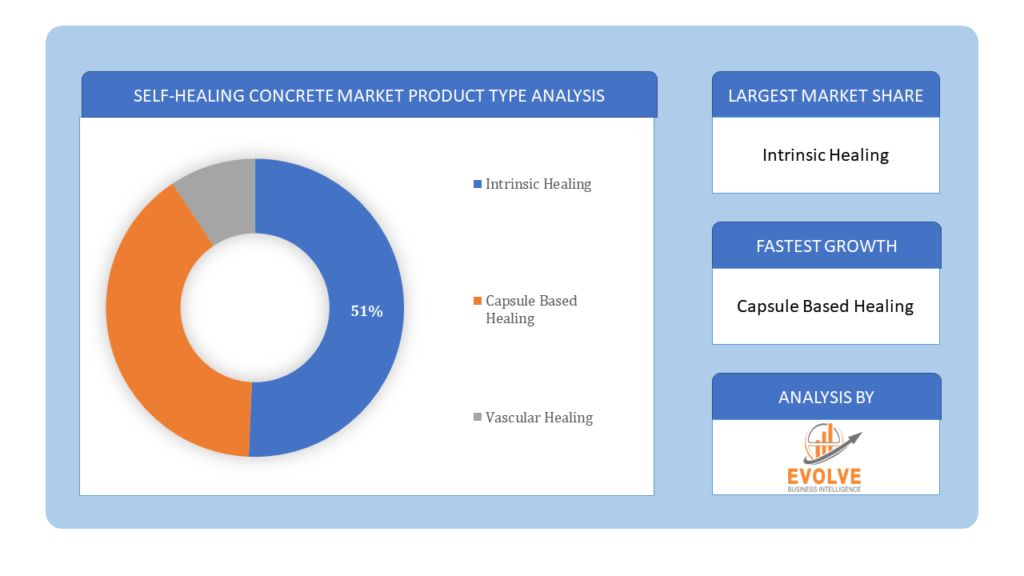 Based on Product Type, the market is segmented based on Intrinsic Healing, Capsule Based Healing and Vascular Healing. The Capsule segment dominant the market. In this technique, the typical bacterial colonies and food materials are confined in capsules and mixed in concrete. Thus, bacterial colonies are functional in every portion of the concrete structure. Accordingly, capsule-based Technology allows large-scale usage of this concrete and is in high demand.
Based on Product Type, the market is segmented based on Intrinsic Healing, Capsule Based Healing and Vascular Healing. The Capsule segment dominant the market. In this technique, the typical bacterial colonies and food materials are confined in capsules and mixed in concrete. Thus, bacterial colonies are functional in every portion of the concrete structure. Accordingly, capsule-based Technology allows large-scale usage of this concrete and is in high demand.
By End User
Based on End User, the market segment has been divided into the Residential and Commercial, Industrial and Civil Infrastructure. The Civil Infrastructure dominant the market. The civil infrastructure is anticipated to be the biggest beneficiary of self-healing concrete, enhancing the strength of tunnels, roads, and dams. Therefore, it aims to improve the durability of different civil engineering structures, including underpasses and bridges and helps in reducing the maintenance cost in the long run. All these aspects are anticipated to drive the self-healing concrete market in civil infrastructures.
Global Self-Healing Concrete Market Regional Analysis
Based on region, the global Self-Healing Concrete Market has been divided into North America, Europe, Asia-Pacific, the Middle East & Africa, and Latin America. North America is projected to dominate the use of the Self-Healing Concrete Market followed by the Asia-Pacific and Europe regions.
 Self-Healing Concrete North America Market
Self-Healing Concrete North America Market
North America holds a dominant position in the Self-Healing Concrete Market. In the United States and Canada, there is significant investment in infrastructure renewal and sustainable construction practices. Government initiatives and funding support for resilient infrastructure and green building projects create opportunities for self-healing concrete adoption, particularly in urban areas and transportation infrastructure.
Self-Healing Concrete Asia-Pacific Market
The Asia-Pacific region has indeed emerged as the fastest-growing market for the Self-Healing Concrete Market industry. Rapid urbanization, population growth, and infrastructure development in countries like China, India, and Japan drive demand for innovative construction materials. Self-healing concrete is increasingly considered for large-scale infrastructure projects to reduce maintenance costs and enhance durability. Government infrastructure investments and initiatives to improve sustainability contribute to market expansion.
Competitive Landscape
The global Self-Healing Concrete Market is highly competitive, with numerous players offering a wide range of software solutions. The competitive landscape is characterized by the presence of established companies, as well as emerging startups and niche players. To increase their market position and attract a wide consumer base, the businesses are employing various strategies, such as product launches, and strategic alliances.
Prominent Players:
- Basilisk
- Tarmac Trading Limited
- Avecom N.V.
- BASF SE
- CEMEX S.A.B. DE C.V.
- Devan-Micropolis
- Xypex Chemical Corporation.
- Breedon Group Plc.
- Fescon
Key Development
In July 2021, JP Concrete, a top supplier of sustainable precast concrete products, signed an agreement with Basilisk, the pioneer of self-healing concrete Technology, to operate its new Sensicrete compound. This deal will make JP Concrete the first UK-based company to offer self-healing concrete products.
In October 2021, A team of research scientists from the Polytechnic University of Valencia (UPV) and the Politecnico di Milano created a new self-healing concrete material that is ultra-resistant and is reported to be 30% more long-lasting and has a high-yield threshold compared to conventional high-performance.
Scope of the Report
Global Self-Healing Concrete Market, by Product Type
- Intrinsic Healing
- Capsule Based Healing
- Vascular Healing
Global Self-Healing Concrete Market, by End User
- Residential and Commercial
- Industrial
- Civil Infrastructure
Global Self-Healing Concrete Market, by Region
- North America
- US
- Canada
- Mexico
- Europe
- UK
- Germany
- France
- Italy
- Spain
- Benelux
- Nordic
- Rest of Europe
- Asia Pacific
- China
- Japan
- South Korea
- Indonesia
- Austalia
- Malaysia
- India
- Rest of Asia Pacific
- South America
- Brazil
- Argentina
- Rest of South America
- Middle East & Africa
- Saudi Arabia
- UAE
- Egypt
- South Africa
- Rest of Middle East & Africa
| Parameters | Indicators |
|---|---|
| Market Size | 2033: $84.65 Billion |
| CAGR | 31.4% CAGR (2023-2033) |
| Base year | 2022 |
| Forecast Period | 2023-2033 |
| Historical Data | 2021 |
| Report Coverage | Revenue Forecast, Competitive Landscape, Growth Factors, and Trends |
| Key Segmentations | Product Type, End User |
| Geographies Covered | North America, Europe, Asia-Pacific, Latin America, Middle East, Africa |
| Key Vendors | Basilisk, Tarmac Trading Limited, Avecom N.V., BASF SE, CEMEX S.A.B. DE C.V., Devan-Micropolis, Xypex Chemical Corporation., Breedon Group Plc. and Fescon |
| Key Market Opportunities | • Infrastructure Renewal • Green Building Standards |
| Key Market Drivers | • Advancements in Material Science • Technological Innovation |
REPORT CONTENT BRIEF:
- High-level analysis of the current and future Self-Healing Concrete Market trends and opportunities
- Detailed analysis of current market drivers, restraining factors, and opportunities in the future
- Self-Healing Concrete Market historical market size for the year 2021, and forecast from 2023 to 2033
- Self-Healing Concrete Market share analysis at each product level
- Competitor analysis with detailed insight into its product segment, Government & Defense strength, and strategies adopted.
- Identifies key strategies adopted including product launches and developments, mergers and acquisitions, joint ventures, collaborations, and partnerships as well as funding taken and investment done, among others.
- To identify and understand the various factors involved in the global Self-Healing Concrete Market affected by the pandemic
- To provide a detailed insight into the major companies operating in the market. The profiling will include the Government & Defense health of the company’s past 2-3 years with segmental and regional revenue breakup, product offering, recent developments, SWOT analysis, and key strategies.
